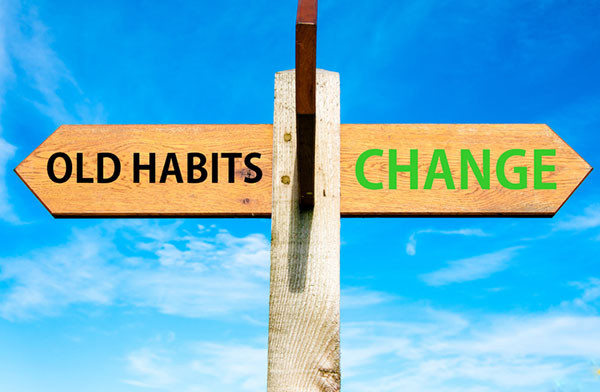Select a category



One of the more unusual conditions affecting the hands and fingers is Dupuytren's contracture (also called Dupuytren's disease). Here, one or more fingers become curled, which can make it difficult to pick up or hold objects or perform everyday activities.
Legend says the condition originated with the Vikings of Northern Europe, although this is debated. It was later named after the 19th-century French surgeon Guillaume Dupuytren, who did the first successful operation on the condition. Fast-forward to the 21st century, and Dupuytren's contracture now affects about one in 20 Americans.
What is Dupuytren's contracture?
Fascia is a sheet of fibrous tissue beneath the skin of the fingers and the palm. Dupuytren's contracture is a thickening and shortening of this tissue.
This thickened area begins as a hard lump called a nodule. Over years to decades, it may progress to a thick band called a cord that causes one or more fingers to curl toward the palm and become stuck in a bent position. This can make it difficult to grasp objects, button clothes, use a computer, or perform other daily tasks.
The condition does not always get progressively worse. It may be stable for years or even improve in some people.
Which fingers are most likely to be affected?
The ring and pinky fingers are most often affected. But the condition can strike all fingers and the thumb.
"In about half of cases, the condition can affect both hands," says Dr. Phillip Blazar, an orthopedic surgeon and Division Chief of Hand and Upper Extremity at Harvard-affiliated Brigham and Women's Hospital. Fortunately, it rarely causes pain.
What causes Dupuytren's contracture?
Currently, the cause is unclear. Still, several factors can increase a person's risk, such as
People with diabetes and seizure disorders are also more likely to have Dupuytren's. The condition may appear and/or worsen after trauma to the hand.
How is Dupuytren's contracture treated?
Although there is no cure, treatments and occupational or physical therapy can help address symptoms and improve finger mobility. "Many people who have mild cases of Dupuytren's find it has little impact on their ability to use their hands," says Dr. Blazar.
However, moderate or severe cases can interfere with hand function. It's possible to restore normal finger motion with nonsurgical treatments, such as:
"Your hand surgeon will discuss both treatment options to determine which is best for your situation," says Dr. Blazar. "There are also some variations in the anatomy of the disease which may make one treatment or the other less favorable for a particular person or finger." Both of these treatments don't remove the cords, and the condition can return and require additional treatment.
What about surgical treatment?
If nonsurgical treatment does not relieve symptoms or you have a severe condition, surgery may be recommended. Surgical approaches include:
You wear a splint on the repaired hand during recovery. People should expect some pain, stiffness, and swelling afterward. The length of recovery varies for each individual, and also with how many fingers were operated on and which ones.
"Most people largely recover by three months, but some may not feel fully recovered for quite a bit longer," says Dr. Blazar. Hand therapists can also help with strength and flexibility exercises to speed recovery.
Most people's fingers move better after surgery. However, as with nonsurgical treatments, the contracture can come back, so some people may need additional surgery later on.
Source: Harvard Health Publishing

Source: Harvard Health Publishing


We all have habits we'd like to get rid of, and every night we give ourselves the same pep talk: I'll go to bed earlier. I will resist that cookie. I will stop biting my nails. And then tomorrow comes, we cave, and feel worse than bad. We feel defeated and guilty because we know better and still can't resist.
The cycle is understandable, because the brain doesn't make changes easily. But breaking an unhealthy habit can be done. It takes intent, a little white-knuckling, and some effective behavior modification techniques. But even before that, it helps to understand what's happening in our brains, with our motivations, and with our self-talk.
We feel rewarded for certain habits
Good or bad habits are routines, and routines, like showering or driving to work, are automatic and make our lives easier. "The brain doesn't have to think too much," say Dr. Stephanie Collier, director of education in the division of geriatric psychology at McLean Hospital, and instructor of psychiatry at Harvard Medical School.
Bad habits are slightly different, but when we try to break a bad one we create dissonance, and the brain doesn't like that, says Dr. Luana Marques, associate professor of psychology at Harvard Medical School. The limbic system in the brain activates the fight-flight-or-freeze responses, and our reaction is to avoid this "threat" and go back to the old behavior, even though we know it's not good for us.
Often, habits that don't benefit us still feel good, since the brain releases dopamine. It does this with anything that helps us as a species to survive, like eating or sex. Avoiding change qualifies as survival, and we get rewarded (albeit temporarily), so we keep reverting every time. "That's why it's so hard," Collier says.
Finding the reason why you want to change
But before you try to change a habit, it's fundamental to identify why you want to change. When the reason is more personal — you want to be around for your kids; you want to travel more — you have a stronger motivation and a reminder to refer back to during struggles.
After that, you want to figure out your internal and external triggers, and that takes some detective work. When the bad-habit urge hits, ask when, where, and with whom it happens, and how you are feeling, be it sad, lonely, depressed, nervous. It's a mixing and matching process and different for every person, but if you notice a clue beforehand, you might be able to catch yourself, Collier says.
The next part — and sometimes the harder part — is modifying your behavior. If your weakness is a morning muffin on the way to work, the solution might be to change your route. But environments can't always be altered, so you want to find a replacement, such as having almonds instead of candy or frozen yogurt in lieu of ice cream. "You don't have to aim for perfect, but just a little bit healthier," Collier says.
You also want to avoid the all-or-nothing mindset, which leads to quick burnout, and instead take micro-steps toward your goal, Marques says. If you stay up until midnight but want to be in bed at 10, the reasonable progression is: start with 11:45; the next night 11:30; the next 11:15 … It builds success and minimizes avoiding the new habit.
It also helps to remember that urges follow a cycle. They're initially intense, then wane, and usually go away in about 20 minutes. Collier suggests to set a timer and focus on "just getting through that."
In that waiting period, seeking new sensations can provide useful distraction. You can go outside and feel the wind and smell the air. You can do something physical. Collier also likes using hot and cold. In the extreme, it's submerging your face into a bowl of water, which can slow down your heart rate. But it could also be holding an ice cube or taking a hot shower. "You're focused on the sensation and not the urge," she says.
Accept that success isn't a straight line
As you try to change, there will be bumps and setbacks, which are part of the process of lasting change. The problem is that we're our own worst critics, and some people view anything except total success as complete failure.
Marques says to try to take a third-person perspective and think about how you'd react to a friend who said that having one bag of chips had ruined their whole diet. You'd be kind and reassuring, not critical, so give yourself the same treatment. A lot of the struggle with self-criticism is not seeing thoughts as facts, but merely thoughts. It takes practice, but it's the same idea as with meditation. You treat what comes into your head as clouds, acknowledging them and letting them roll on through. "Everyone has distorted thoughts all the time," Marques says. "It's what you do with them."
It also helps to reduce stress and minimize that sense of failure to know that the goal isn't to make the old habit disappear, because it won't. You're just trying to strengthen the new routine so eventually it takes over, and the old habit isn't even a thought. But it's a constant process, made easier with self-compassion, because there's no way to prepare for every situation or be able to predict when and where a trigger might happen.
"You can't prepare for life," Collier says. "Life is going to throw things at you."
Source: Harvard Health Publishing


Now that it's 2024, perhaps you've thought about taking up a new exercise program, eating better, or some other ways to improve your health. That's great! Or, as my grandfather would say, "there's nothing wrong with that" — his highest possible praise.
In fact, few medical treatments rival the massive health benefits of regular exercise. But how do you decide which type of exercise is best for you? Well, you could get advice from your doctor or a personal trainer. You might read books on fitness or sample exercise classes. It turns out, though, that many people are simply scrolling through tons of engaging "fitspirational" posts on social media. If you do that regularly — more often, say, than taking a brisk walk — a new study suggests you should rethink that strategy.
What exactly is fitspiration?
Fitspiration describes social media posts intended to inspire physical fitness and promote health. You can find fitspirational posts on TikTok, Instagram, Facebook, and other popular social media sites. Typically, they feature glossy photos and videos packaged with exercise and diet recommendations, accompanied by encouraging messages and quotes.
On Instagram alone, a search for #fitspiration (or related hashtags such as #fitspo) currently lists nearly 100 million posts. Most of them display images of attractive, lean, and fit women as they exercise and talk about fitness and optimizing health.
What's the problem with fitspiration?
The potential benefits of a pro-fitness message reaching millions of people are obvious. But the message has to be credible and valid. And, importantly, posts should not convey inaccurate, unhelpful, or even harmful information. That's where the problems start.
Clearly, social media posts about fitness can have positive effects, according to some research, especially when focused on realistic exercise goals rather than appearance. However, fitspirational posts may have downsides for viewers, including
A study of #fitspiration: Do these social media posts actually inspire fitness?
A recent study assesses the quality of content with fitspiration hashtags posted by Instagram influencers. The results were disappointing, though not surprising.
The authors identified 100 Instagram accounts of the most popular fitspiration influencers. Each of these accounts' last 15 posts was analyzed. Posts were not considered credible if they
Here's what the researchers found:
A quarter of these accounts failed the credibility test on more than one of these criteria. Even among the accounts considered credible, only half were posted by people with credentials related to fitness or health, such as certification as a physical therapist or personal trainer.
While this study did not examine whether the posts had an actual impact on fitness outcomes, the findings raise questions about the quality of fitspiration content.
What does this mean for you?
If you're looking for fitness-related health content, seek out the best information you can. Be skeptical of any sources lacking credentials related to fitness. Be especially wary of posts selling a product or service.
The authors of this study established certain criteria for fitness-related content they reviewed. You could apply this to posts you see online.
The bottom line
It should be no surprise to find that when it comes to health information, social media may not always be the best place to start.
While taking steps to improve your health is commendable — truly, there's nothing wrong with that! — getting motivated to be more physically active is just a start. Information you rely on to improve your physical fitness shouldn't just look appealing. It should be well-vetted for safety and backed by solid evidence that it can actually improve your health.
Here's to better fitness in the New Year!
Source: Harvard Health Publishing

Actress Toyin Abraham has hailed the organizers of the just concluded 2024 AMVCA after you-know-who didn’t win an award.
She said this the best AMVCA and she is saying well done to the organizers.

 Eneojoherbert
Eneojoherbert Healthwatch
Healthwatch Instablog9ja
Instablog9ja